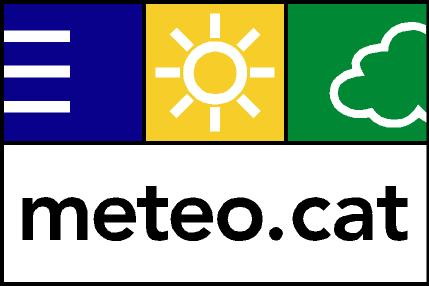
#1 Servei Meteorològic de Catalunya
The Meteorological Service of Catalonia (SMC) is a public company affiliated with the Department of Climate Action, Food, and Rural Agenda of the Government of Catalonia, responsible for managing meteorological observation and prediction systems in Catalonia. The SMC was established in 1921, and in its initial phase (until 1939), it gave a significant boost to meteorology in Catalonia and, with some of its scientific work, gained a certain international prestige. Notable works from this period include participation in the preparation of the International Atlas of Clouds and States of the Sky, contribution to the International Polar Year (1932–33) with the creation of two high mountain observatories, and the design of the Jardí pluviograph. In 1939, with the beginning of the Franco regime, the SMC was suppressed. It was not until 1996, provisionally at first, and definitively in 2001, that the SMC was re-established. Among its main functions, it stands out for providing a system for predicting and monitoring hazardous weather conditions (in coordination with Civil Protection), managing and maintaining the Meteorological Equipment Network (currently 190 automatic weather stations, 120 manual weather stations, 4 radars, 4 lightning detectors, and 1 automatic radiosonde), organizing training and outreach activities in the field of meteorology, and monitoring present and future climate variability and change. It also manages the Catalan Phenological Network, with more than 70 observers, and it also participates in international and national research projects in the field of meteorological modeling, the impact of climate change on health, or monitoring climate change in the Pyrenees, among others. Currently, it has a staff of 81 people.
#2 EMS & Partners
The EMS was founded in September 1999 in Norrköping, Sweden as the association of Meteorological Societies in Europe, and celebrates its 25th anniversary this year. The network consists of 38 Member Societies and 30 Associate Members. The EMS is a non-profit-making organisation. The main flagship of the EMS, the EMS Annual Meetings, that have been organised in partnership with Copernicus Meetings from the onset; they attract some 600 people each year from all sectors of the field. With a number of Awards outstanding contributions to the science, its applications and communication are honoured; young scientists are supported through conference grants. The newest project is the launch of the Journal of the EMS (JEMS) in collaboration with Elsevier B.V. and we invite everyone interested to meet the Editors-in-Chief during the breaks on Tuesday afternoon and evening.
The Associació Catalana de Meteorologia (ACAM), joined EMS as Member Society in 2015, and together with SMC is the local host of the EMS2024.
ACAM members will be available at the booth, present the new phase of their scientific journal, Tethys, offer a meteorological card game, and – for the hot weather in Barcelona – will provide meteorological fans for everyone in need. ACAM is also organising some of the excursion offered to EMS2024 participants.

#3 HIWeather
High Impact Weather Project (HIWeather) is a 10-year research project established in 2016 by WMO World Weather Research Programm (WWRP). HIWeather aims to promote cooperative International research to achieve a dramatic increase in resilience to high impact weather, worldwide, through improving forecasts for timescales of minutes to two weeks and enhancing their communication and utility in social, economic and environmental applications.
#4 Earth Science Department (BSC)
https://bsc.es/discover-bsc/organisation/scientific-structure/earth-sciences
The Earth Sciences Department of the Barcelona Supercomputing Center aims to conduct research on climate, air quality, atmospheric composition, and climate-related impacts, including agriculture, energy and public health. To this end, it develops and implements global and regional environmental modelling, forecasts, data solutions and tailored services using dynamic models and artificial intelligence with techniques requiring high-performance computing.
The department comprises five groups: Atmospheric Composition, Climate Variability and Change, Computational Earth Sciences, Earth System Services, and Global Health Resilience.
Since its creation in 2006, the department has become a reference in global air quality and climate-related research, as well as in the societal impacts of climate variability and change. The research expertise of the members of the department, in collaboration with national and international institutions, enables it to support major societal and environmental challenges. The department is also involved in technology management and transfer and in providing real-time information on air quality, mineral dust, climate and public health. Earth Sciences Department, developing and implementing innovative modelling and data solutions to strengthen societal resilience to environmental challenges.















